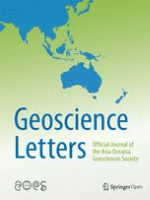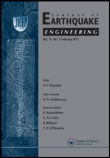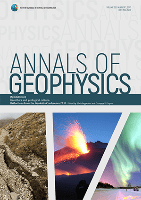
JOURNAL OF SEISMOLOGY
Scope & Guideline
Advancing seismic understanding through rigorous research.
Introduction
Aims and Scopes
- Seismic Source Analysis:
Investigating the characteristics and parameters of seismic sources, including fault behavior and rupture mechanisms, to improve understanding of earthquake dynamics. - Ground Motion Prediction:
Developing models to predict ground motion parameters for various seismic events, utilizing statistical, empirical, and machine learning approaches. - Seismic Hazard Assessment:
Conducting probabilistic and deterministic assessments to evaluate seismic hazards in different regions, incorporating geological and geophysical data. - Induced Seismicity Studies:
Exploring the relationships between human activities (e.g., mining, fluid injection) and seismic events, focusing on mechanisms of induced seismicity. - Geotechnical Seismology:
Evaluating the impact of geological and soil conditions on seismic wave propagation and site effects, employing various modeling and experimental techniques. - Machine Learning Applications:
Integrating machine learning techniques into seismology for tasks such as event classification, ground motion prediction, and data analysis. - Tectonic and Structural Analysis:
Analyzing tectonic settings and structural features to understand the spatial and temporal distribution of seismicity.
Trending and Emerging
- Machine Learning and AI in Seismology:
There is a significant increase in the application of machine learning techniques for seismic event classification, ground motion prediction, and data analysis, indicating a trend towards data-driven research. - Probabilistic Seismic Hazard Assessment:
A growing focus on probabilistic approaches to seismic hazard assessment is evident, as researchers seek to incorporate uncertainties and improve risk evaluations for specific regions. - Real-Time Monitoring and Early Warning Systems:
Emerging technologies aimed at real-time seismic monitoring and early warning systems are receiving increased attention, driven by the need for timely response to seismic threats. - Induced Seismicity Research:
Research on induced seismicity related to anthropogenic activities such as fracking and reservoir-induced seismicity is expanding, reflecting societal concerns regarding human impacts on seismic activity. - Geophysical and Geotechnical Interactions:
There is a rising interest in the interplay between geophysical processes and geotechnical properties, particularly in the context of site-specific seismic response and amplification. - Integrative Approaches to Seismotectonics:
The integration of different disciplines, such as geology, geophysics, and engineering, to analyze seismicity and tectonic processes is becoming increasingly prominent in recent research.
Declining or Waning
- Traditional Seismic Catalog Analyses:
While foundational, the reliance on traditional methods for cataloging seismic events has decreased as new technologies and methodologies emerge, such as machine learning and advanced data processing techniques. - Simplistic Ground Motion Models:
Basic empirical models for ground motion prediction are being overshadowed by more complex, data-driven approaches that account for local site conditions and seismic source characteristics. - Generalized Seismic Risk Assessments:
Broad, non-region-specific assessments are declining in favor of detailed, localized studies that consider specific geological and societal factors. - Historical Earthquake Studies:
Research focusing solely on historical seismic events without contemporary applications or implications has become less frequent, as the field moves towards more applied and predictive studies.
Similar Journals

GEOTECTONICS
Exploring Earth's Mysteries, One Tectonic Shift at a Time.GEOTECTONICS is a distinguished academic journal published by PLEIADES PUBLISHING INC, focusing on key developments in the field of geology. Established in 1978, the journal has dedicated itself to exploring the intricate processes and phenomena associated with Earth's tectonic systems, making substantial contributions to Earth and Planetary Sciences. With an impressive impact factor reflected in its Q2 ranking within the Scopus category of Geology, GEOTECTONICS stands out as a valuable resource for researchers, professionals, and students alike. The journal offers a platform for rigorous peer-reviewed research that spans both fundamental theories and practical applications in geosciences, affirming its significance in fostering academic discourse and advancing geological knowledge. Although it currently does not offer open access, the journal's accessible format and continued publication through to 2024 ensures that it remains at the forefront of geoscientific inquiry.

Quaderni di Geofisica
Unlocking the Secrets of the Earth with Cutting-edge ResearchQuaderni di Geofisica is a distinguished academic journal published by the IST NAZIONALE GEOFISICA & VULCANOLOGIA-INGV in Italy, focusing on pivotal areas within the fields of geophysics, geology, and computer applications in Earth sciences. Since its inception, this journal has served as a vital platform for the dissemination of innovative research and methodologies, advancing our understanding of geophysical phenomena and their implications. The journal spans various converged years from 2007 to 2019 and 2021 to 2024, allowing for a comprehensive examination of contemporary developments in the field. Despite being categorized in Q3 and Q4 quartiles by Scopus, it plays a critical role in bridging the gap between theory and practice for researchers, professionals, and students alike. The journal's commitment to fostering scholarly communication is underscored by its strategic focus on multidisciplinary studies, making it an essential resource for those engaged in Earth sciences research. Readers can access the journal's content through institutional libraries or by direct request, ensuring a broad reach and ongoing contribution to the global scientific community.

Journal of Asian Earth Sciences-X
Exploring the Depths of Asian GeosciencesJournal of Asian Earth Sciences-X, a distinguished publication by ELSEVIER, is at the forefront of Earth and planetary sciences, particularly focusing on the dynamic fields of geology and earth-surface processes. As an Open Access journal since 2019, it provides unparalleled access to high-quality research, fostering global collaboration and dissemination of knowledge. With an impressive impact factor and ranking in the Q2 category for both Earth-Surface Processes and Geology, it serves as a crucial platform for researchers, professionals, and students alike to share their findings and insights. Situated in the United Kingdom, the journal thrives on contributions that enhance our understanding of Asian geosciences within a broader global context, aiming to tackle major challenges such as climate change and natural resource management. By bridging regional studies with global perspectives, the Journal of Asian Earth Sciences-X is not only a vital resource for academia but also supports sustainable development initiatives across the region.

Earthquake Engineering and Engineering Vibration
Innovating methodologies for enhanced seismic performance.Earthquake Engineering and Engineering Vibration, published by Springer, is a leading international journal dedicated to the field of earthquake engineering, structural dynamics, and the associated vibrational research integral to understanding and mitigating seismic risks. With its print ISSN 1671-3664 and E-ISSN 1993-503X, the journal operates from its headquarters in New York, USA. The journal has achieved a commendable Q2 category ranking across multiple engineering disciplines, reflecting its importance to the building and construction, civil and structural engineering, geophysics, geotechnical engineering, and mechanical engineering fields. The journal serves as a vital platform for researchers, practitioners, and students to disseminate their findings, share innovative methodologies, and contribute to advancements in earthquake resilience and engineering practices. Earthquake Engineering and Engineering Vibration is committed to fostering open dialogue and collaboration within the global research community, ensuring that its contributions are both impactful and relevant to contemporary challenges in engineering and environmental safety.

Bulletin of Earthquake Engineering
Building a safer future through engineering excellence.The Bulletin of Earthquake Engineering is a premier journal published by Springer, dedicated to the field of earthquake engineering and its related disciplines. Established in 2003, this esteemed journal has evolved into a critical platform for disseminating cutting-edge research in Building and Construction, Civil and Structural Engineering, Geophysics, and Geotechnical Engineering and Engineering Geology, earning a distinguished position in the Q1 quartile across these categories. With an impressive ranking in Scopus, notably a rank of #8 in Earth and Planetary Sciences for Geophysics, the journal addresses urgent challenges in the mitigation of seismic risks and the enhancement of structural resilience. Researchers and practitioners benefit from a wealth of peer-reviewed articles, insights, and methodologies relevant to modern engineering practices aimed at improving safety and sustainability in earthquake-prone regions. The Bulletin of Earthquake Engineering embodies a commitment to advancing knowledge and practice in earthquake resilience, making it an invaluable resource for academics, industry professionals, and rising scholars alike.

Geoscience Letters
Exploring the Depths of Earth and BeyondGeoscience Letters, published by Springer, is a prominent open-access journal in the field of Earth and Planetary Sciences, recognized for its dedication to advancing knowledge and research in this vital area of study. With a reported impact factor that reflects its esteemed position—ranking in the Q1 quartile of Earth and Planetary Sciences, particularly as the journal ranks #48 out of 195 in the general category according to Scopus—the journal serves as a vital resource for researchers, professionals, and students. Since its inception in 2014, Geoscience Letters has facilitated the dissemination of high-quality research and critical insights, aiming to bridge the gap between scientific discovery and societal needs. Its commitment to open access ensures that the latest findings are readily available to a global audience, thus enhancing collaboration and innovation within the geosciences community.

JOURNAL OF EARTHQUAKE ENGINEERING
Shaping the future of earthquake-resistant design.JOURNAL OF EARTHQUAKE ENGINEERING, published by TAYLOR & FRANCIS LTD, stands as a pivotal resource in the fields of Building and Construction, Civil and Structural Engineering, and Geotechnical Engineering. With an impressive Q1 ranking in multiple categories for 2023, this journal is instrumental for researchers, professionals, and students committed to advancing knowledge in earthquake engineering and its practical applications. As a platform that spans the years from 1997 to 2024, it highlights significant contributions to safety, risk, reliability, and quality in engineering practices. While the journal operates on a subscription basis, its highly regarded articles, bolstered by robust Scopus rankings—such as rank #46 in Building and Construction—underscore its credibility and influence in shaping standards and methodologies within the discipline. Promoting innovative and evidence-based approaches, the JOURNAL OF EARTHQUAKE ENGINEERING is essential reading for anyone engaged in the science and technology of earthquake-resistant structures.

ANNALS OF GEOPHYSICS
Pioneering Insights into Earth and Planetary SciencesANNALS OF GEOPHYSICS is a prestigious open access journal dedicated to the advancement and dissemination of research in the field of geophysics. Published by the IST NAZIONALE DI GEOFISICA E VULCANOLOGIA in Italy, this journal has embraced open access since its inception in 1948, promoting wide accessibility to cutting-edge research. With an impressive Scopus ranking, placing it in the 52nd percentile within Earth and Planetary Sciences for the category of Geophysics, the journal serves as a vital platform for scholars, researchers, and practitioners seeking to explore the intricate phenomena of our planet. Covering a diverse range of topics in the geophysical community, the ANNALS OF GEOPHYSICS invites contributions that push the boundaries of our knowledge and understanding of geophysical processes, aiding in the development of innovative solutions to urgent environmental challenges. Published continuously from 2002 to 2024, the journal’s commitment to quality and rigor is reflected in its Q3 quartile ranking for 2023, making it a notable resource for the academic community.

Solid Earth
Innovative Insights into Earth's ProcessesSolid Earth is a prestigious open-access journal published by COPERNICUS GESELLSCHAFT MBH, dedicated to advancing the understanding of geological and environmental sciences. With an ISSN of 1869-9510 and E-ISSN 1869-9529, this journal has been at the forefront of the Earth sciences since it became fully open access in 2010. Based in Göttingen, Germany, it features a rich array of interdisciplinary research relevant to earth-surface processes, geochemistry, paleontology, and geophysics, among other fields. The significance of Solid Earth is underscored by its rankings in the Q1 category across multiple related disciplines, demonstrating a strong impact factor within the community. As of 2023, it stands out with an impressive Scopus ranking, pushing the boundaries of knowledge and research excellence. By providing a platform for high-quality scientific contributions, Solid Earth is essential for researchers, professionals, and students looking to explore and disseminate impactful findings in the pursuit of sustainable earth science advancements.

Earthquake Science
Exploring the Depths of Seismic ScienceEarthquake Science is a prominent open access journal that has been serving the scientific community since its inception in 2009, published by KEAI PUBLISHING LTD. With an ISSN of 1674-4519 and an E-ISSN of 1867-8777, this journal has established itself as a significant platform for the dissemination of research in the fields of geology, geophysics, and geotechnical engineering, evident from its Q2 ranking in 2023 across these categories. Based in China, Earthquake Science aims to facilitate knowledge sharing and foster interdisciplinary collaboration by publishing a range of high-quality articles, reviews, and research papers demonstrating advancements in understanding seismic activity and its impacts. Its commitment to open access since 2015 ensures that valuable insights are available to researchers, professionals, and students globally, thereby supporting critical inquiries into earthquake mechanisms and risk management strategies. Explore the latest findings and contribute to the ongoing conversation in the evolving landscape of earthquake science.